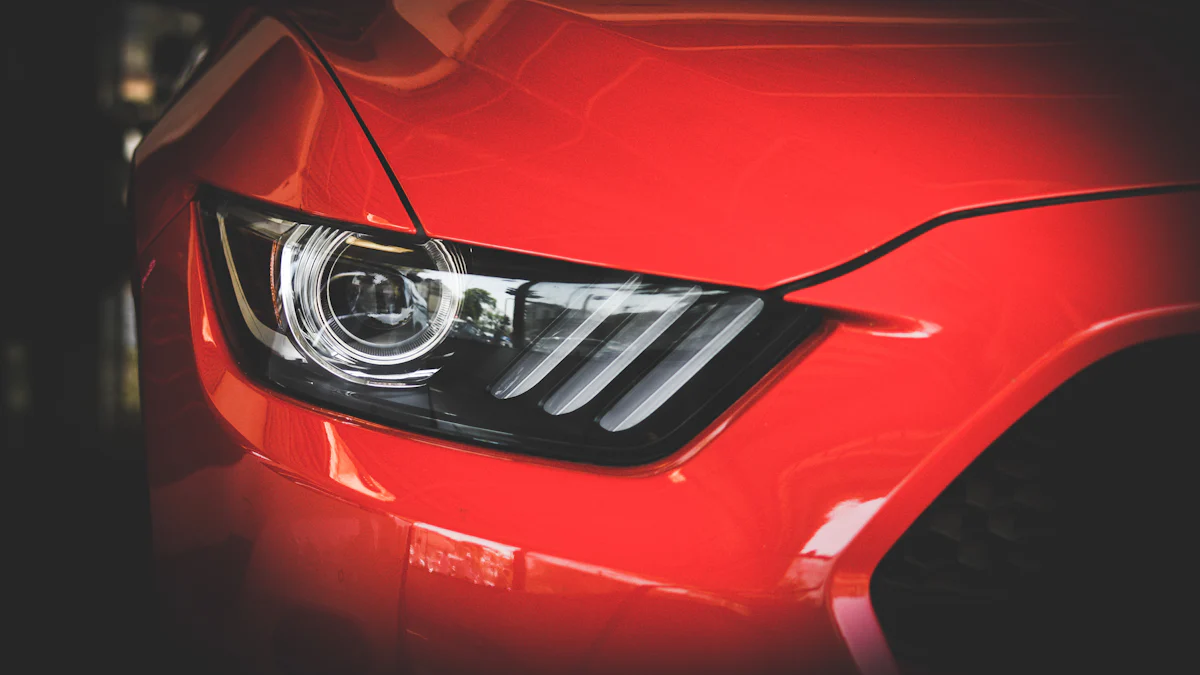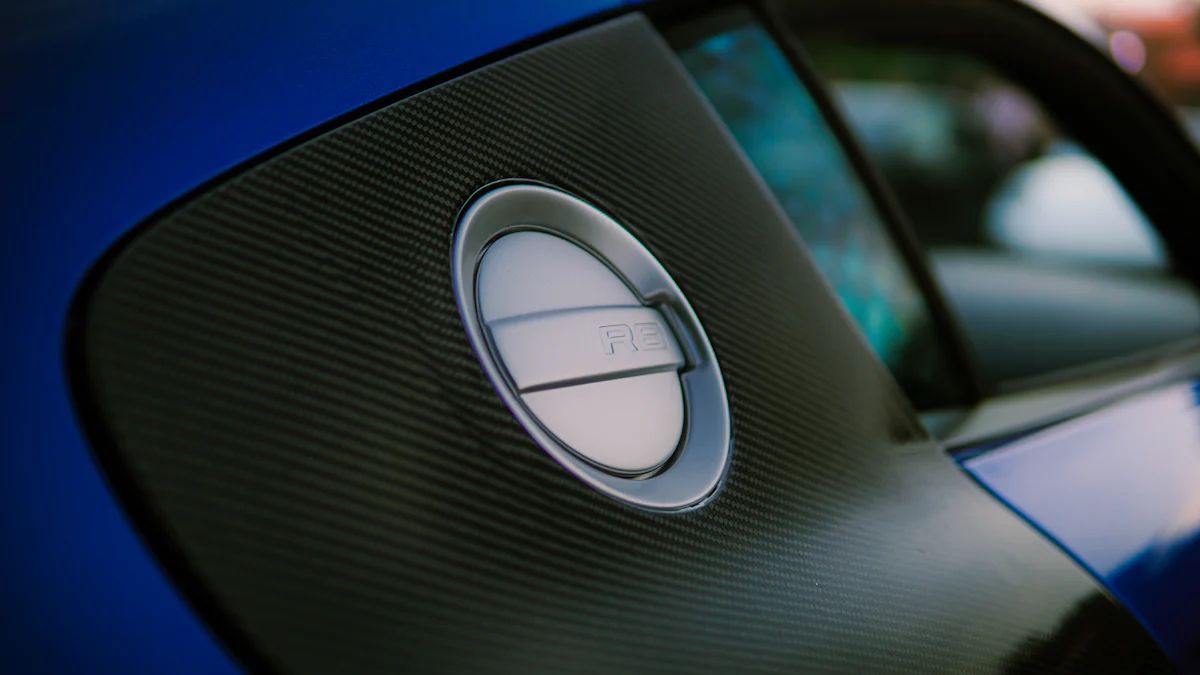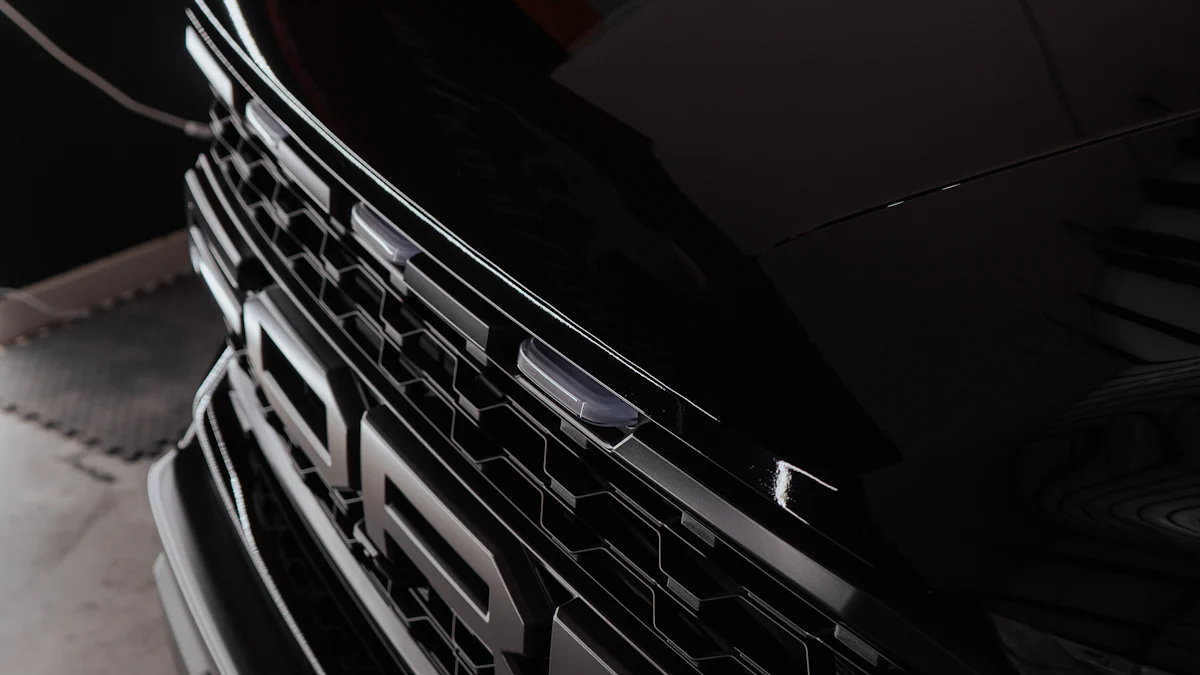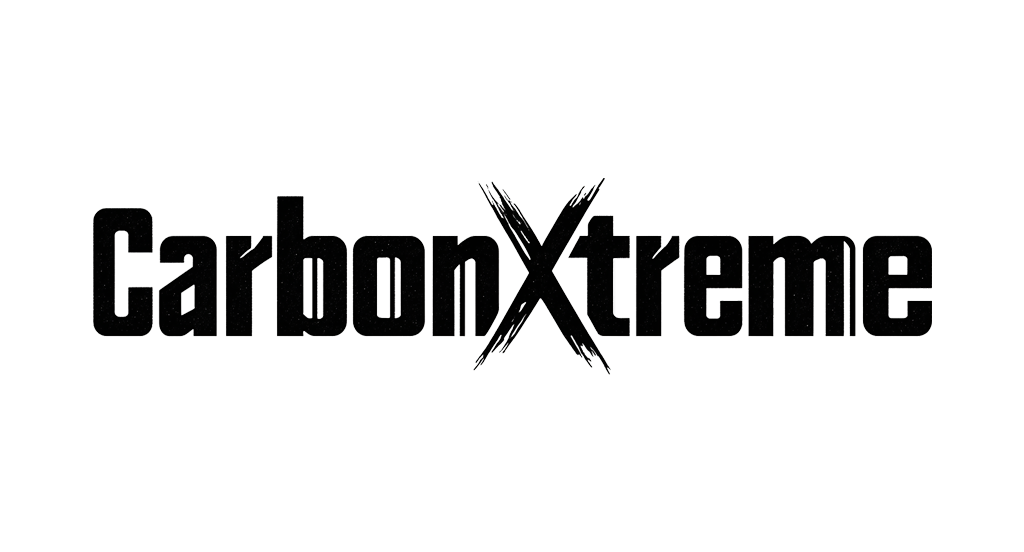Front Lip Material Guide: Comparing Carbon Fiber, Plastic, and FRP

A front lip is more than just a stylish addition to your car. It enhances aerodynamics by reducing lift and improving airflow. The material you choose plays a crucial role in its performance and durability. Carbon fiber offers unmatched strength and lightness, making it ideal for high-performance vehicles. Plastic provides flexibility and affordability, perfect for daily use. FRP, or Fiber Reinforced Plastic, strikes a balance between cost and durability. Each material has unique traits that cater to different needs, whether you prioritize style, functionality, or budget.
Key Takeaways
Carbon fiber front lips offer superior strength and lightweight benefits, making them ideal for performance enthusiasts, but come with a high price tag.
Plastic front lips are the most affordable option, providing flexibility and decent durability for daily driving, making them perfect for budget-conscious buyers.
FRP strikes a balance between cost and performance, offering good strength and durability for custom builds or occasional track use without breaking the bank.
Consider your driving habits: plastic is great for city driving, while carbon fiber or FRP is better suited for track-focused or show cars.
Maintenance varies by material: carbon fiber requires careful handling, plastic is low-maintenance, and FRP needs occasional touch-ups to maintain its appearance.
Aesthetically, carbon fiber delivers a premium look, while plastic offers a more understated style, and FRP provides versatility for unique designs.
Evaluate your budget and vehicle use to choose the right front lip material that aligns with your performance and aesthetic goals.
Cost Comparison
When choosing a front lip, cost often becomes a deciding factor. The price of the material can vary significantly, depending on its properties and manufacturing process. Let’s break down the cost differences among carbon fiber, plastic, and FRP.
Carbon Fiber
Carbon fiber front lips are the most expensive option. The high cost comes from the advanced manufacturing process and premium materials used. These lips are designed for performance enthusiasts who value lightweight construction and superior strength. However, the price tag can range from several hundred to over a thousand dollars, depending on the brand and design. If you’re looking for a high-end, performance-oriented front lip, carbon fiber is worth considering, but it may not suit every budget.
Plastic
Plastic front lips, particularly those made from ABS plastic, are the most affordable choice. They are mass-produced, which keeps the cost low. Prices typically range from $50 to $200, making them an excellent option for budget-conscious buyers. Despite their lower cost, plastic lips offer decent flexibility and durability for daily driving. If you want a practical and cost-effective solution, plastic is a reliable choice.
FRP
FRP, or Fiber Reinforced Plastic, falls between carbon fiber and plastic in terms of cost. It offers a balance of affordability and performance. Prices for FRP front lips usually range from $150 to $500. While not as lightweight as carbon fiber, FRP provides good strength and durability for its price. This makes it a popular choice for custom builds or occasional track use. If you’re seeking a middle-ground option, FRP delivers a mix of value and functionality.
Quick Tip: Consider your budget and how you plan to use your vehicle. For daily driving, plastic is economical. For performance-focused builds, carbon fiber justifies its cost. FRP works well if you need a balance of both.
Durability and Maintenance
When selecting a front lip, durability and maintenance are critical factors. Each material—carbon fiber, plastic, and FRP—has unique characteristics that influence how well it withstands wear and tear and how much effort it requires to maintain.
Carbon Fiber
Carbon fiber excels in strength and rigidity, making it highly durable under normal conditions. Its resistance to corrosion ensures longevity, even in harsh environments. However, carbon fiber is sensitive to impacts. A minor collision or scrape can cause cracks or chips, which may require professional repair. Maintenance involves regular cleaning with non-abrasive products to preserve its glossy finish. Avoid harsh chemicals, as they can damage the resin coating. While carbon fiber offers excellent durability, it demands careful handling to prevent costly repairs.
Did You Know? Carbon fiber composites, commonly used in lightweight automobile structures, provide high specific strength and rigidity. These properties make them ideal for performance-focused applications like front lips.
Plastic
Plastic front lips, especially those made from ABS, are known for their flexibility. This flexibility allows them to absorb minor impacts without cracking, making them a practical choice for daily drivers. However, plastic is more prone to scratches and fading over time, especially when exposed to sunlight and harsh weather. Maintenance is straightforward—cleaning with soap and water usually suffices. Applying a UV protectant can help prevent discoloration. While plastic may not match the strength of carbon fiber, its resilience to minor damage makes it a low-maintenance option.
FRP
FRP, or Fiber Reinforced Plastic, offers a middle ground in terms of durability. It is stronger than plastic but less flexible, which makes it more susceptible to cracking under stress. FRP can handle moderate impacts but may not withstand repeated abuse. Maintenance involves regular cleaning and occasional touch-ups to repair chips or cracks. Unlike carbon fiber, FRP does not require specialized care, but it benefits from protective coatings to enhance its lifespan. For those seeking a balance between strength and ease of maintenance, FRP is a viable option.
Quick Tip: Consider your driving habits and environment. For city driving with frequent bumps, plastic’s flexibility is advantageous. For track use or show cars, carbon fiber or FRP offers better durability and aesthetics.
Style and Aesthetics

When it comes to style and aesthetics, the material of your front lip plays a significant role in defining your car’s overall appearance. Each material—carbon fiber, plastic, and FRP—offers distinct visual characteristics that cater to different tastes and preferences.
Carbon Fiber
Carbon fiber stands out as the most visually striking option. Its signature woven pattern and glossy finish exude a high-performance, premium look. This material is often associated with luxury and sports cars, making it a favorite among enthusiasts who want their vehicles to turn heads. The sleek and modern appearance of carbon fiber complements aggressive body kits and aerodynamic designs.
However, the aesthetic appeal comes at a cost. Carbon fiber is fragile and prone to damage from impacts or scrapes. Repairs are challenging and often require complete replacement. If you prioritize a bold, high-end look and are willing to handle it with care, carbon fiber delivers unmatched style.
Pro Tip: Pair a carbon fiber front lip with other carbon fiber accents, such as side skirts or rear diffusers, for a cohesive and polished appearance.
Plastic
Plastic front lips, particularly those made from ABS plastic, offer a more understated and practical aesthetic. While they lack the premium feel of carbon fiber, they can still enhance your car’s look with clean lines and subtle designs. Plastic lips are often painted to match the vehicle’s color, creating a seamless and integrated appearance.
This material suits daily drivers who want a stylish upgrade without drawing too much attention. Plastic’s flexibility also allows for creative designs, making it a versatile choice for various car models. If you prefer a functional yet visually appealing option, plastic provides a balance of style and practicality.
Quick Fact: Many manufacturers use ABS plastic for OEM front lips due to its affordability and ease of customization.
FRP
FRP, or Fiber Reinforced Plastic, offers a middle ground between the boldness of carbon fiber and the simplicity of plastic. It can mimic the look of carbon fiber when finished with a similar weave pattern or painted to match the car’s color. This versatility makes FRP a popular choice for custom builds and enthusiasts who want a unique aesthetic.
While FRP lacks the high-gloss finish of carbon fiber, it still provides a sporty and aggressive appearance. Its ability to be molded into intricate shapes allows for creative and eye-catching designs. If you want a stylish front lip that balances cost and customization, FRP is an excellent option.
Did You Know? FRP is commonly used in aftermarket body kits due to its adaptability and ability to achieve complex designs.
Weight and Performance

When evaluating a front lip, weight and performance are crucial factors. The material you choose directly impacts your car’s handling, fuel efficiency, and overall driving experience. Let’s explore how carbon fiber, plastic, and FRP perform in these areas.
Carbon Fiber
Carbon fiber stands out for its exceptional strength-to-weight ratio. This material is incredibly lightweight, which reduces the overall weight of your vehicle. A lighter car improves acceleration, braking, and cornering. These benefits make carbon fiber the top choice for performance enthusiasts and track-focused builds.
The reduced weight also contributes to better fuel efficiency. By lowering the load on the engine, carbon fiber helps optimize energy consumption. However, the high cost of this material may limit its accessibility for some drivers. If you prioritize performance and can invest in premium materials, carbon fiber offers unmatched advantages.
Scientific Insight: Studies on composite materials, like carbon fiber, highlight their ability to reduce weight while maintaining high stiffness and strength. These properties enhance vehicle dynamics and efficiency.
Plastic
Plastic, particularly ABS plastic, is heavier than carbon fiber but still relatively lightweight. Its weight makes it suitable for daily drivers who want a practical and affordable front lip without compromising too much on performance. While it doesn’t provide the same level of agility as carbon fiber, plastic still offers decent handling improvements for most driving conditions.
The added weight of plastic may slightly impact fuel efficiency compared to carbon fiber. However, this difference is minimal for everyday use. Plastic’s flexibility and affordability make it a reliable option for those who value practicality over peak performance.
Quick Fact: Many manufacturers use ABS plastic for OEM parts due to its balance of weight, cost, and durability.
FRP
FRP, or Fiber Reinforced Plastic, falls between carbon fiber and plastic in terms of weight. It is heavier than carbon fiber but lighter than most plastics. This middle ground makes FRP a versatile choice for drivers seeking a balance of performance and affordability.
The moderate weight of FRP provides noticeable improvements in handling and stability. While it doesn’t match the lightweight benefits of carbon fiber, it still enhances your car’s performance compared to standard plastic. FRP’s adaptability and strength make it a popular choice for custom builds and occasional track use.
Did You Know? Composite materials like FRP are widely used in automotive applications for their ability to reduce weight while maintaining structural integrity.
Use Cases and Suitability
Choosing the right material for your front lip depends on how you plan to use your vehicle. Each material—carbon fiber, plastic, and FRP—offers unique advantages tailored to specific driving needs and preferences.
Carbon Fiber
Carbon fiber excels in high-performance scenarios. If you frequently drive on tracks or participate in motorsport events, this material provides the lightweight construction and aerodynamic benefits you need. Its strength-to-weight ratio enhances handling and speed, making it ideal for enthusiasts who prioritize performance.
For show cars, carbon fiber adds a premium, eye-catching aesthetic. The glossy finish and woven pattern create a luxurious appearance that stands out in competitions or exhibitions. However, carbon fiber requires careful handling. It is less forgiving in daily driving conditions, where curbs or debris can cause damage.
Historical Insight: Composite materials like carbon fiber have revolutionized automotive design, much like how composite bumper beams replaced steel for better impact resistance and reduced weight.
If you value performance and style above all else, carbon fiber is the ultimate choice. However, its cost and fragility make it less suitable for casual or budget-conscious drivers.
Plastic
Plastic front lips are perfect for daily drivers. Their flexibility allows them to withstand minor impacts, such as scraping against curbs or navigating uneven roads. This resilience makes plastic a practical option for city driving or commuting.
Plastic also suits those who want an affordable upgrade without sacrificing functionality. Many manufacturers use ABS plastic for OEM parts due to its durability and ease of customization. You can paint it to match your car’s color, achieving a seamless look without breaking the bank.
For drivers who prioritize practicality and cost-effectiveness, plastic offers a reliable solution. It may not deliver the same performance as carbon fiber, but it handles everyday challenges with ease.
FRP
FRP, or Fiber Reinforced Plastic, strikes a balance between performance and affordability. It works well for custom builds or occasional track use, where moderate strength and durability are sufficient. FRP’s adaptability allows for intricate designs, making it a popular choice among car enthusiasts who want a unique aesthetic.
While FRP lacks the flexibility of plastic, it provides better impact resistance than standard materials. This makes it suitable for drivers who want a stylish and functional front lip without the premium cost of carbon fiber.
Quick Fact: FRP’s versatility mirrors the evolution of composite bumper beams, which replaced steel for their ability to absorb impact energy while maintaining structural integrity.
If you seek a middle-ground option that balances cost, style, and performance, FRP delivers a compelling choice.
Choosing the right front lip material depends on your priorities. Carbon fiber delivers unmatched performance and a premium look, making it ideal for high-performance or show vehicles. Plastic offers the most affordable and practical solution, perfect for daily drivers who need durability and flexibility. FRP strikes a balance between cost, style, and functionality, catering to custom builds or occasional track use. Evaluate your budget, driving habits, and aesthetic goals to make the best decision. Each material has unique strengths, so align your choice with your specific needs for the best results.
